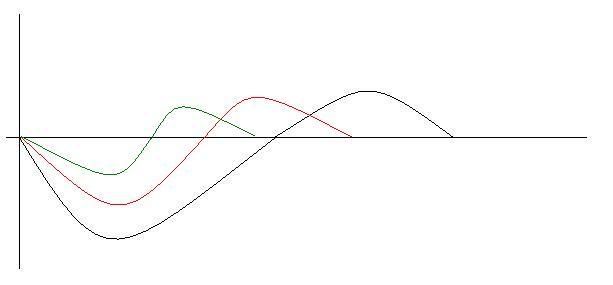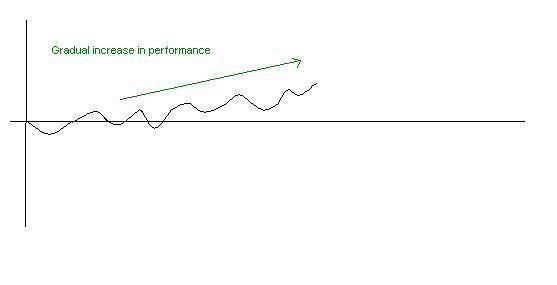disclaimer: i havent read this but a bunch of guys i know seemed to really like it.
Foreword
This thread is meant as an introduction to periodisation. Too often, I have seen people who didn't understand the foundations of training, so I decided to fix this situation.
Obviously, I will need to keep many details out for sake of simplicity. Periodisation has filled hundreds of thousands of pages, and is the main subject of 3-4 yrs university kinesiology programs. I will try to keep it as simple as possible, and this is why I will use as many graphs as I can to better illustrate concepts.
I have worked for quite a long time to come up with the simplest way to explain and illustrate these concepts. This ended up being much longer than I expected . This is definitely a long read, but I think it is worth reading it. I hope you will enjoy it. I am totally open to comments, suggestions and questions; however, please refrain from sending me PM asking for a training program, as it could quickly get out of control (I wouldn't have the time, and I would have to ask for financial incentives for my work).
I chose to post this thread in the powerlifting section rather than the Exercises or Workout programs sections, as this is more likely to interest elite or wannabe-elite lifters than the average gym-goer.
Finally, I had a previous thread about muscle strength, feel free to read it to refresh your knowledge on what makes a muscle strong:
http://forum.bodybuilding.com/showthread.php?t=6093771
1. The basic principles of training: Theories of training
The theory of training has defined many theorical principles of training. Most of them do not need to be covered here. I use the word "principle" as a vague term that may not have the same signification as what would normally be taught.
1.1 The principle of overcompensation
When you train, you become weaker, less performant in your sport. You then recover, and eventually become better: that's overcompensation.
 Figure A: overcompensation
Figure A: overcompensation
The middle line represent a state of homeostasis, a state where there is no improvement. After the maximum peak of overcompensation, comes a state of involution, where performance gradually goes back to a state of homeostasis.
In the next picture below, you can see I draw 3 different lines; these reflect the effects 3 different loads of training would have on performance and recovery. Notice how all 3 lines have approximately the same training duration; the difference is in the speed of recovery, and the training effect (depth of load versus height of overcompensation curve).
 Figure B: Different training loads
Figure B: Different training loads
It becomes clear that the best time to train would be at the moment of the highest peak of overcompensation. This is not always possible, but we should be as close as possible to it. Over a longer time period, this would result in this:
 Figure C: Gradual increase in performance
Figure C: Gradual increase in performance
As you can see, even though we can't always have totally recovered in time for the next training, the cumulative effect will still result in a gradual increase in performance. Notice how the curve is not a "perfect sequence" of overcompensation. We should still strive for overcompensation, since overlooking this concept would result in the dreaded effect of overtraining:
 Figure D: Gradual decrease in performance
1.2 Different ways to stress your body
Figure D: Gradual decrease in performance
1.2 Different ways to stress your body
There are 4 components in training load (3 are often taught, I add a 4th one).
- Duration: how long the training actually lasts. A concept that is also used in strength sports is volume: it would be expressed as number of sets and reps rather than hours.
- Frequency: how often you train during the week;
- Intensity: This is often expressed in % of your max. You would be approximately at 80% of your max when you do sets of 8 reps (RM), and you would be at about 90% when doing sets of 4 reps.
- Density: This one is not usually taught as a load component, but I like to include it: it refers to the amount of time spent resting between sets. It is therefore only applicable to strength sports. If you lift for 60 seconds, then take a 180 sec. rest, your total density would be 25%.
1.3 Different "spheres" of load in training
Not all your body is stressed the same way depending on the type of training you do; the different spheres are:
- endocrinal: a good example is the effect of training on testosterone and cortisol; testosterone is high at the beginning of training, and gradually decreases. The reverse is true for cortisol.
- metabolic/muscular: energy production (ATP synthesis, etc.), muscle recovery. Recovery from this type of stress is quick, except maybe in the case of DOMS (Delayed Onset Muscle Soreness: where tiny muscle tears appear everywhere in the affected muscle). ATP/CP is replenished in a few minutes, lactic acid is cleared within an hour, and glycogen can be replenished within 24-36 hours.
- CNS (neuro-psychological): this stress is particularly present in competition, where mind games can be played.
- CNS (neuro-muscular): this is the biggest stress when weight training. Neuro-muscular recovery is 7 to 11 times slower than metabolic/muscular recovery. Nervous cells tend to adopt a state of inhibition for quite a few hours after heavy load.
- cardio-pulmonary: this is particularly present in cardio-vascular sports, such as cycling, running, etc.
1.4 Different ways to measure performance
Performance can be measured through 4 criterias: speed, strength, flexibility, endurance.
- In powerlifting, strength is the most important, speed is just a bonus; in olympic lifting, both speed and strength are important. In both case, a minimum level of flexibility is important.
- In cycling, long distance running, xc skiing, endurance is the most important.
- In sprinting sports, speed and strength provide power.
- etc. etc.
1.5 The principle of progressive increase of load in training
This one might appear as a no-brainer. Unfortunately, it is probably the most misunderstood principle of all. In weight training sports, we will naturally have a tendency to increase the load by increasing the weights, as we get stronger. Even though you are stronger, this still result in a higher stress on the neuro-muscular sphere. But, as discussed in section 1.2, you can also increase the load by increasing duration, frequency and density.
Increase your training load too quickly, and your body will not have time to adapt, and you will reach a state of overtraining.